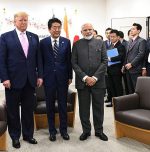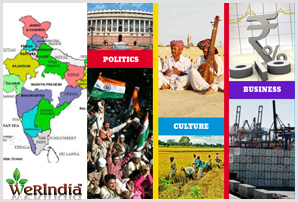India races to shield exporters as US tariffs threaten market share

As 50% US tariffs begin to bite, the Indian government is working urgently to protect its labour-intensive export sectors such as textiles, leather, shrimps, and gems & jewellery.
A series of mitigating measures, including subsidised interest rates, collateral-free loans, and credit guarantees, are being considered to prevent an irreversible loss of market share.
Though India’s textile and apparel exports to the US grew by 12% in the first half of this year, the pace fell well short of competing nations like Vietnam, Bangladesh, Indonesia, and Cambodia.
The situation has worsened with an additional 25% secondary US tariffs tied to India’s Russian oil imports taking effect from August 27, severely eroding India’s cost advantage.
In meetings with exporters, policymakers have underlined the urgent need to retain market presence, stressing that lost share will be hard to regain, even if tariffs are rolled back later.
Exporters echoed the sentiment and urged the government to facilitate domestic opportunities, including bulk orders from Indian Railways, and private giants like Reliance Retail and Aditya Birla Group.
Government officials are weighing a broad support package similar to pandemic-era relief schemes.
These include:
- Collateral-free working capital loans
- Subsidised interest rates
- Credit guarantees for delayed payments
- Revival of the Interest Equalisation Scheme (IES)
The now-defunct IES, once a lifeline for MSME exporters, offered interest support to offset India’s high borrowing costs.
Exporters are calling for its reinstatement, particularly since it costs just ₹2,500 crore annually, but delivers significant competitiveness.
To avoid triggering countervailing duties from the US, support measures are being designed as non-market-specific.
Past attempts to directly support US-targeted exports have led to retaliatory actions by Washington.
Trade experts warn of a massive decline in India’s US exports, potentially from $87 billion in FY25 to $49.6 billion in FY26.
This is because two-thirds of these exports now face punitive tariffs, with some categories seeing effective rates over 60%.
While about 30% of exports, like pharmaceuticals, electronics, and oil products, remain tariff-free, others, like shrimp, apparel, chemicals, and machinery, are at risk.
The US accounts for 20% of India’s merchandise exports, making the stakes incredibly high.
With shrimp exports alone deriving 48% of revenue from the US, the impact could be deep and long-lasting, unless India moves quickly to cushion its exporters.
Image from Pxhere (Free for commercial use / CC0 Public Domain)
Image Published on March 12, 2017
Image Reference: https://pxhere.com/en/photo/1112217









